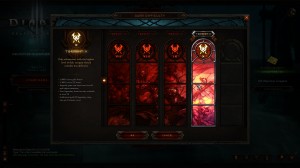Normally my posts inspire critical thought pieces on the Game-Wisdom YouTube channel, but we have the reverse today. Thinking about game progression and what keeps people going, I want to talk about the high mark that all game designers should strive for when designing their games.
A Quick Catch-up:
Before we talk about the goal, let’s briefly recap about the kinds of progression in video games. Games can be built on one or both forms of progression: Player-based or In-Game. Player-based progression is the player learning and improving at the game. In-Game progression represents abstracted growth that impacts the player’s character or options. We can also consider simply unlocking new levels or missions as in-game progression.
Both forms of progression act as a gatekeeper for the game. In most cases, the player’s knowledge of the game will reach mastery before the in-game progression. Regardless, every player begins a new game at zero of each. From there, it’s up to the designer to motivate and push players through their game, and that can present a problem.
A Drag:
A common pitfall that designers can fall into is not designing a proper progression model. At any given time, you will have players of all skill levels playing your game; from experts to brand new users. What ends up happening is that the designer will create a one-sized fits all progression system for their game.
The issue is that one set progression model cannot serve multiple player experiences. If progression is too fast, expert players will get right into the action, but new players will be lost. On the other hand, if progression is too slow, new players will be happy, but experts will get bored.
In some cases, both groups could get bored because of slow progression. In Cook, Serve Delicious!, progression is locked by an arbitrary number of days that you must play along with “learning the ropes” goals. What ends up happening is that you’ll complete all the goals before the day one, and then have to wait until you can move on.
Players of all skill levels hate padded gameplay. Ten hours of amazing gameplay will always beat 20 hours of just so-so gameplay.
Arbitrary conditions are not good forms of progression, as they take the player out of the equation. We’ve talked about this before, but it bears repeating: The player should always feel like they’re making forward momentum.
There is one solid indicator that the designer has a well-designed progression model.
Un-tethered Progression:
The best kind of progression model is when the player is free to go at their own pace. With that said, I’m sure some of you are asking, “Doesn’t every game do this?” The challenge is that the progression of the game should be universal: Perfect for any player regardless of their skill level.
Novice players shouldn’t be rushed through the game, while expert players shouldn’t be tethered to a progression curve designed for new players.
We have seen several cases where designers have created great progression models with different designs.
The Mario Galaxy series features levels designed around different skill levels. Players can experience the levels and make progress at their own pace. At the end of the game, every player will reach the same ending with the final world, but they’ll do it in their own time.
You can also allow players to adjust the difficulty based on their mastery of the game. Games like Diablo 3 and the World Ends With You allow the player to raise or lower the difficulty at their leisure. Making the game harder increases the rewards for expert players, and lowering it helps people who are learning. Once again, the player is free to make their own decision regarding progressing through the game.
There are some obvious exceptions to this that we need to bring up. Games like the Souls series, where everyone is being tested with difficult challenges to learn, are exceptions to this rule. Another exception are games built on replaying the game such as in rogue-likes. The reason is that progression is going to be built on the player learning the rules of the game and how to use the systems.
Always Moving Forward:
The player should never feel like they’re wasting their time or that the game is holding them back. Creating an effective progression model requires you to understand your design and the best way to explain it to someone. A game that moves too slow or too fast through its lessons can push players away.
The solution is either based in effective level design or systems designed to allow for variable play. Even though this seems like extra work, it can lead to improved game design and a stronger foundation for your mechanics.
Unless the player is always making progress through general play, look for ways to reward expert players not at the expense of new ones.
At the end of the day, everyone should reach the same point at their own pace and feel like they’re the ones in control. If you can get that feeling in your game, then you know that you succeeded.
If you enjoyed this post, please consider donating to the Game-Wisdom Patreon campaign. Your donations can help to keep the site going and allow me to produce more great content. Follow me on Twitter @GWBycer, and you can find daily video content on the Game-Wisdom YouTube channel.




